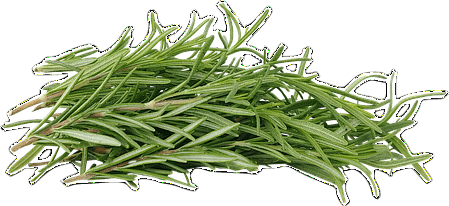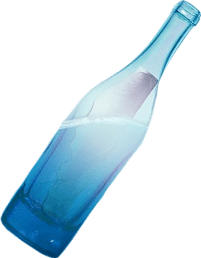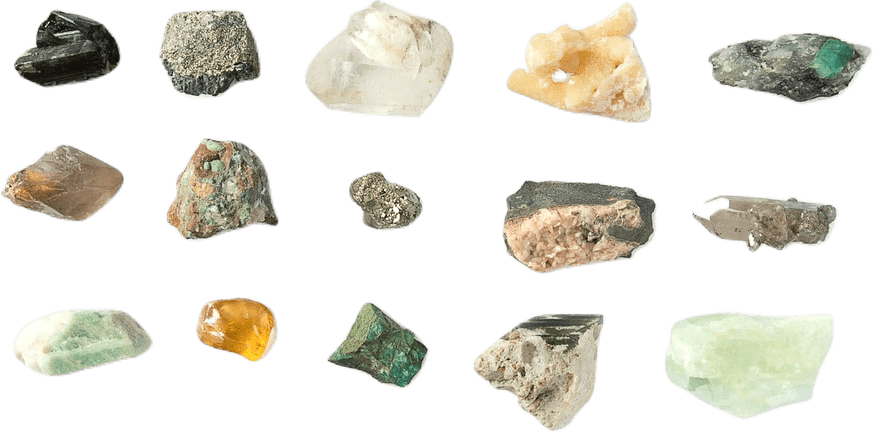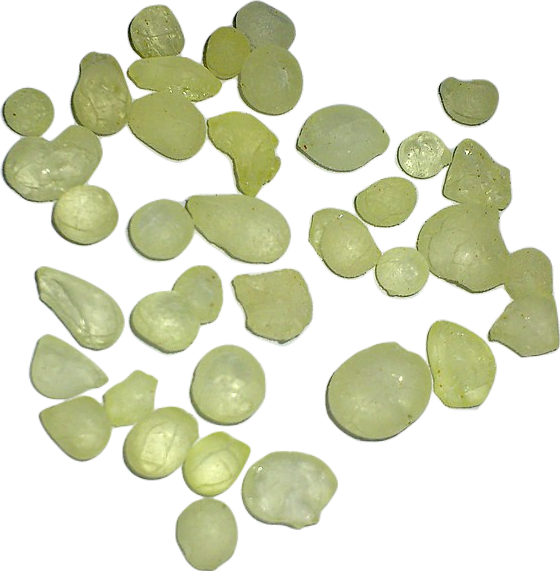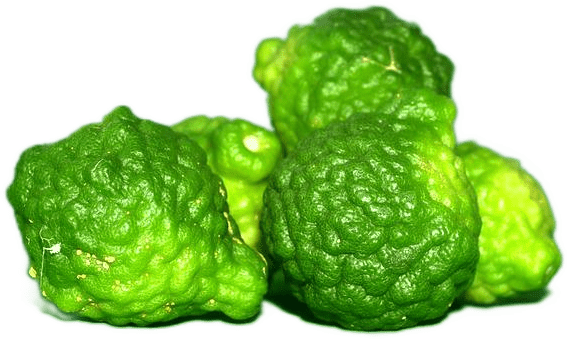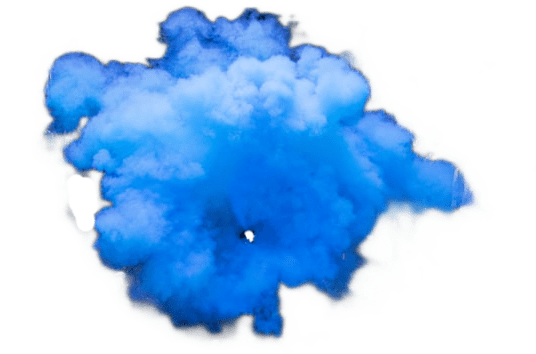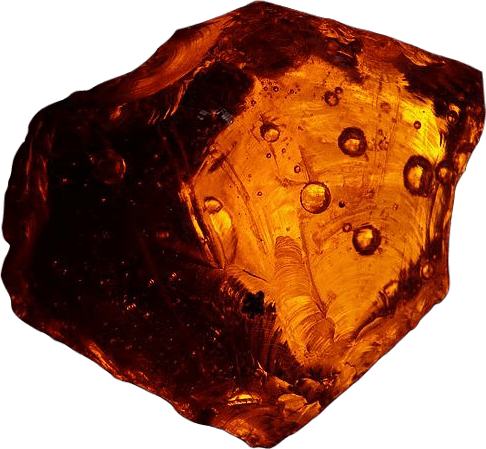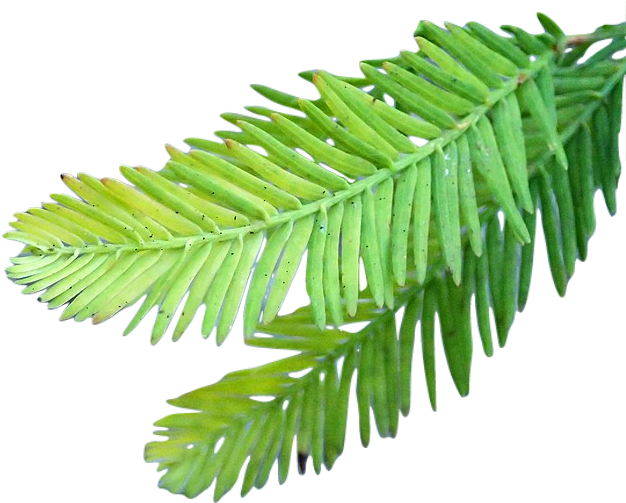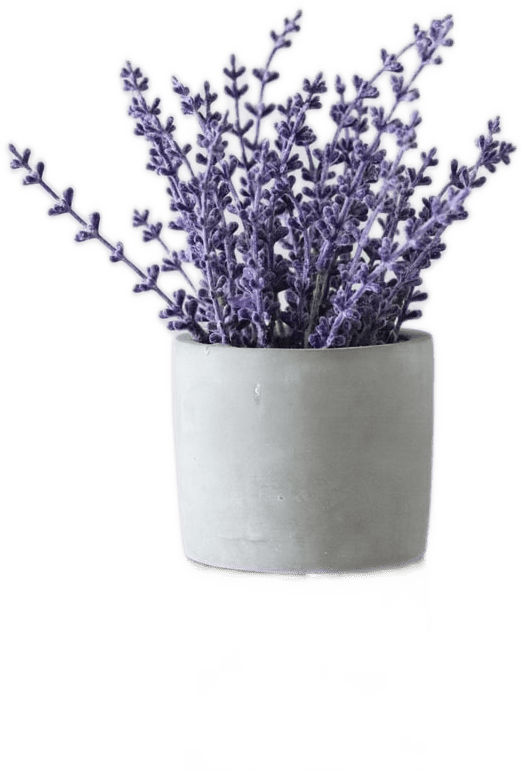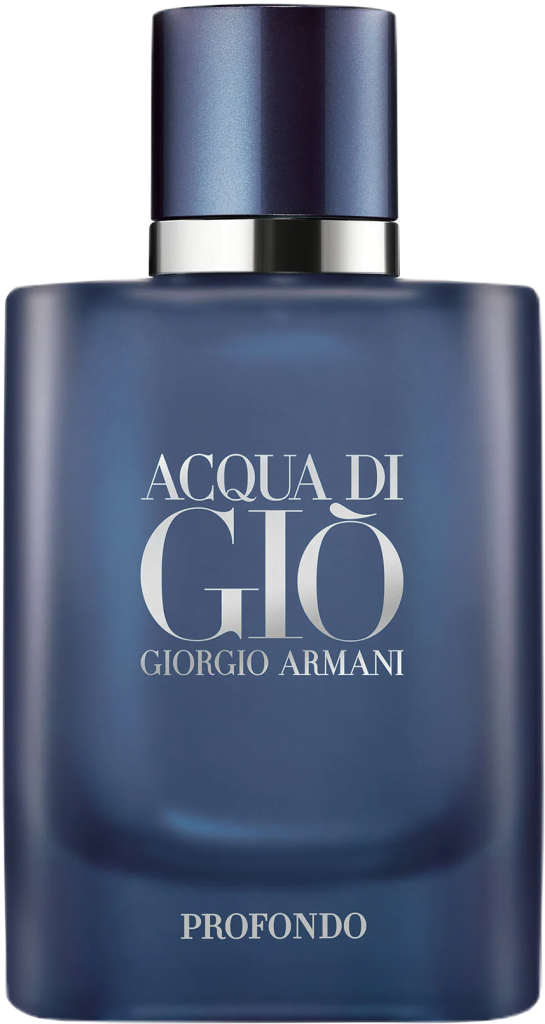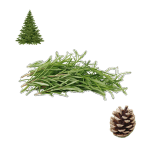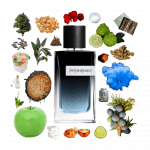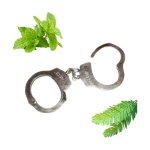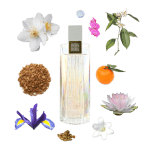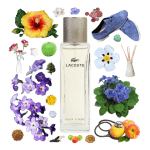Acqua di Giò Profondo Eau de Parfum by Giorgio Armani Review
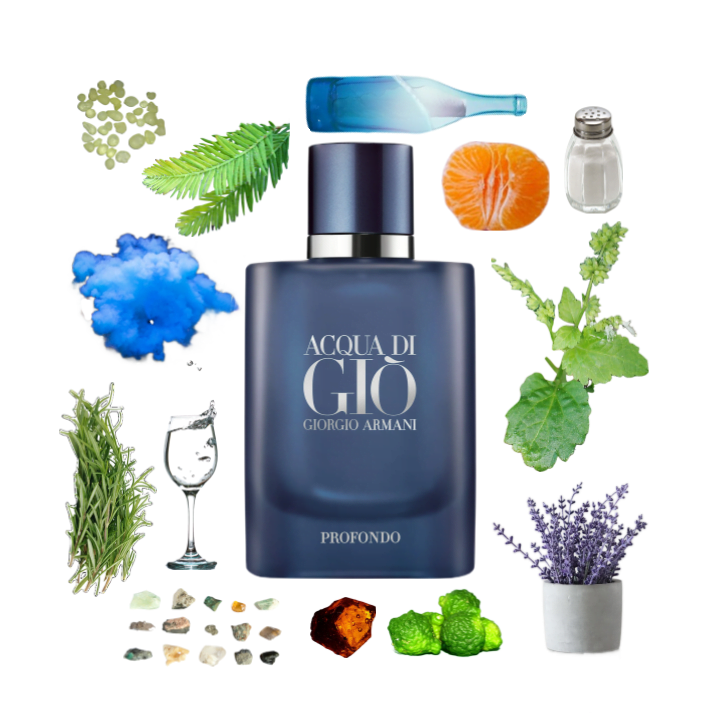
Smelling Giorgio Armani’s Acqua di Giò Profondo, I am reminded of an old Doctor Who episode involving a tear in the fabric of reality, which humanity promptly proceeds to poke and prod and experiment with incessantly instead of just leaving it as it is. That tear in time and space is the original Acqua di Giò.
To paraphrase The Doctor’s rant on the matter, “And that cologne, you think, ‘Oh, should we leave it alone? Should we back off? Should we play it safe? …Nah!’ you think, ‘let’s make it bluer!'”
Passably pleasant and utterly uninteresting, this is the 2000s sporty frat boy reincarnation of the original Acqua di Giò. Gone are the subtlety, the carefully constructed pyramid of notes, everything but the central marine DNA of the original. This is one in a long line of modern bright blue fragrances that are loud, disdainful, and rife for post-workout over-spraying, only slightly better put together than many of its peers.
This is a fresh but not refreshing twist on the original that turns the sea notes and aquatic and marine accords way up, turning the 90s classic into a 2000s deodorant-and-locker-rooms, beast-mode-gym-bro blue fragrance. It’s fresh in that intense, moody, hefty way that sporty flankers in indigo-to-charcoal bottles often are.
Still, unlike some similar blue gym scents, that freshness in Profondo manages to convey actual notes: the aromatics of the original are still here, along with a heavy dose of innovative new sea notes. This is one of the more interesting and distinct sporty blue scents out there, so if you like that sort of thing and aren’t opposed to salt, Profondo is for you.
The marine heart of the original is here, and it is pleasant, albeit exaggerated to match the swaggering contours of everything else. The sea notes here feel much saltier to me than in the original. Perhaps the salt is drawn out by all the other contrasting deep and heavy notes; it makes sense that, like every other facet of Acqua di Giò, the marine notes have been concentrated several times over. Miraculously, it all but almost entirely avoids the metallic effect that marine notes can sometimes have, successfully siloing the saltiness in the realm of seawater rather than that of blood or the inside of a dryer.
This is a fascinating salt note, intriguing rather than chilling. Somehow, even concentrated several times over, it preserves its shape and avoids dissolving into a metallic briny mess. I can only credit this to the sophistication of the original Acqua di Giò DNA holding up even when transported into this strange new context and strengthened several times over.
But then again, perhaps it’s the inclusion of the intriguing new (captive, which is to say, proprietary) Aquozone molecule that makes this a much cleaner and easier-to-digest salty scent than many others. This Firmenich creation is essentially a slightly more metallic and ozonic variant on the typical fresh calone smell, serving double duty as both a bright blue calone-fresh powerhouse and an intriguing additional dimension to the sea note profile here.
There is still a hint of metal to the salt in Profondo, a dull gray metal that doesn’t call much attention to itself. It acts like a smoke making everything about this fragrance a hazier, smoggier, darker blue. It isn’t a shiny metal like stainless steel or a dirty metal like coins. This is a dull gray metal scent with slight mineralic nuances. It reminds me of the fascinating flint mineral note in the base of Hermes’ Terre d’Hermes.
Here is a melange of salty, mineral, dull-gray-metal notes nestled at the base of Profondo, underscoring the aggressive brightness of its top and middle notes. It adds a darkness to the composition, acting not unlike incense or some other smoky note. The mineral smog whips up storm clouds over Profondo’s Aquazone sea, contrasting elegantly with the calone-fresh side of the scent.
This haze of salty, metallic, and mineral notes adds some darkness and heft to Profondo while still matching the overtones of the main marine accord. It balances the composition nicely, a dark smog heavy enough to counterbalance the loudness of the bright fresh notes. This does make for an all-around blaring loud blue scent, but there is a sense of stability to the composition.
Though it’s louder and much less restrained than the original, Profondo does have its artistic flourishes. There’s a lovely hint of almost-mentholic evergreen wood that feels like cyprus lurking in the heart notes. This is joined by a curious green warm resinous note, which is mastic. There’s something a touch comforting to both these curious greenish notes. They add sophistication and depth to the heart of the typical citrus-marine-aromatic fresh blue profile.
Although it’s faint, this green accord provides a much-needed additional dimension to Profondo. They make up the cologne’s largest departure from the typical blue scent formula of fresh aquatic calone notes, aromatic herbs, and citrus, and pay homage to the complex dimensions of the original.
The rosemary-lavender heart of the fragrance is the boiled-down absolute of the original array of Acqua di Giò herbs, and the bergamot and mandarin are the essence of the original citrus opening. Though both of these are amplified for more of a conventional modern blue fragrance effect, they, along with the sea notes, make up the core of what keeps this recognizable as Acqua di Giò. These notes are refreshing and rather delicious in the first few minutes of the opening especially, when the citrus really gets to shine.
Disregarding the muddle of mineral, salt, and metal notes, the base, too, is similar to the original, comprised of a rather typical mix of musk, amber, and patchouli. Without the cedar and oakmoss it’s stripped down, of course, but so are the top and bottom layers of Profondo. Still, Alberto Morillas does a good job of stripping down the original Acqua di Giò composition here while retaining everything at the center of that familiar, nostalgic original accord.
The late drydown appears to also have a supporting ambroxan accord, chiming in with more warm saltiness to supplement the opening sea notes. This is yet another source of salt in a saline braid of an impressive number of layers. It really makes it all the more admirable how cleanly the sea notes in Profondo behave when one considers the number of different salty molecules working together to produce a single smooth, salty-fresh accord.
Because of the way everything here is heavier and less restrained, this is less of a light fresh summer-y fragrance than the original. You could wear the original all day in an un-air-conditioned environment — running to re-apply every few hours, perhaps, but continually finding the scent refreshing and uplifting. Profondo, on the other hand, needs the modern comfort of AC to not feel suffocating, heavy, and just weird. Would you want to smell intense salt and fresh-spicy-locker-room-spray-on-deodorant in a heat wave? I doubt it.
This is too heavy to wear for any outdoor warm-weather activity without simply feeling strange. Indeed, this sort of fragrance feels at odds, to me, with being outside altogether. Nature serves as a stark contrast to the empty chemical freshness of a blue cologne like Acqua di Giò Profondo. It brings a rare self-consciousness out from all the bravado of modern freshies, an awkward feeling of unbelonging in your suffocating cloud of fumes. Keep this one to indoor, thoroughly cooled environments, and it will shine.
This is a deeper, darker, clubbier version of the original Acqua di Giò. That’s not depth as in complexity, but, rather, depth as in weight and heft. Whereas the original was a delicate watercolor reminiscent in some ways to the light-handed style of Jean-Claude Ellena, Profondo goes all in on making this a typical “sexy” fresh fragrance, pairing overbearing bright blue freshness with a dark base note streak of salty metal, patchouli and musk that feels like it’s unsubtly propositioning you.
If this is sexy, it’s in a smirking, swaggering, negging sort of way, in-your-face crude language and gestures. It’s the polar opposite of careful and understated; Profondo is a proposition that slaps you in the face. Though some sense of classiness and restraint is retained through the original marine DNA, this darkness-fresh-spice combination will only ever make me think of haughty young frat guys.
Profumo is the exploitation of the classic Acqua di Giò name designed to fit the modern blue trend. Still, I suppose this was inevitable, and Morillas does a good job of balancing the heart of the original here with everything required of the modern gym bro blue.
I think of the original Acqua di Giò as a proto-blue fragrance. It was novel at first. Then it became a victim of its own success, the cologne everyone and their brother wore on every occasion. And, finally, it was surpassed by its progeny.
Acqua di Giò was one of the first fragrances to assemble the ideas that eventually snowballed into the modern blue, with its fresh citrus, aromatic herbs, and aquatic calone notes. It was fresh, but not suffocatingly so, and was garnished with an impressive array of subtle fruit and floral notes.
The commercial success and rapid near-ubiquity of Acqua di Giò spurred noses in a quest to beat it. What if we made something like this, they all seemed to say, but more? More in-your-face fresh? More aquatic and calone-y? Brighter, more assertive, more dominant? What if we got rid of all the fruit and flowers and put everything we had into making the freshest new thing?
Thus began the freshness arms race. And now, even Acqua di Giò’s own grandsons are joining up.
Mercifully, some of the subtlety and restraint of the original composition is still there, but it’s faint. Acqua di Giò Profondo has a third of the notes (and perfumers) on the original. It kludges together a suggestion of the original marine accord and the waterfall of intense fresh calones, spicy herbs, citrus, and dark smog that modern blue fragrances are known for.
The fact that actual notes are discernible here rather than a simple bright blue cloud of fresh is a testament to that original DNA and buried-but-not-forgotten philosophy of reserve. Acqua di Giò Profondo holds a definitive shape in a way many modern neon clouds of blue fumes don’t. It knows it isn’t going to win the freshness arms race, and to throw it all in with a cloud of headachey calone blue would render the original DNA entirely unrecognizable.
I appreciate all this from Acqua di Giò Profondo. It’s not an unpleasant scent, strictly speaking, and it doesn’t give me a headache, which is always a win for this sort of thing.
Still, that doesn’t mean I like it. It certainly is all but original, playing off the well-known name to sell a rather commonplace take on an all-but-ubiquitous designer trend.
There are some modern blue fragrances that consider themselves dignified, break-out-the-good-silverware-darling-we-have-guests type pieces, suited for any suited occasion. Among these are the likes of Yves Saint Laurent’s Y Eau de Parfum. These are scents that present a carefully constructed, supposedly dignified insouciance, from their care-to-the-wind minimal names to their prominent streak of some distinguishable less-common-but-still-manly fresh note, such as green apple. “Yeah, I’m a bad boy who can bench twice your body weight,” they seem to be trying to say, “but I can be romantic and tie a tie too. And I like apples.”
Acqua di Giò Profondo is not one of those. It stops at “can bench twice your body weight” and doesn’t put on airs of any elegance beyond that. This feels like a standard bright-blue-beast-mode cologne sprayed on liberally after a trip to the gym. Its relatively minimal note pyramid puts it in a rather large crowd of fresh-spicy-bergamot-marine scents. With all the subtlety becoming of extra-strength deodorant bought at Five Below, these scents are designed to clobber you with fresh, manly, athletic impressions and nothing else.
Acqua di Giò Profondo is less of an indiscernible headache than most, making it perhaps some of the best work in that particular genre, if that’s your thing. It’s entirely unoriginal, but if you don’t care and are just looking for an I-just-went-to-the-gym blue scent that stops short of painful muddle in its quest for freshness, this is a great choice.
If you like the original Acqua di Giò but find it too delicate for your tastes, too lightly fresh in a watercolor way when what you’re looking for is a bright neon, if you want another fragrance that plunges the same general idea into the world of marine-fresh-spice-bergamot colognes that come in dark blue or charcoal bottles, you are going to love Profondo.
That increased loudness, brightness, and heaviness also translates to stronger performance, longevity, and sillage than the original. It’s about average for a blue fresh cologne — perhaps a hair under average, but that average is skewed by the sheer number of cheap blue scents that try to clobber you over the head with a bergamot-scented baseball bat. (Eau du Spiders Georg is an outlier and should not have been counted.) Profondo lasts some eight hours, making this a solid performer for a day-long signature scent.
Fragrance rules are fake, tastes are subjective, cultural mores are boring, and you can and should wear whatever you want, whenever you want to. That being said, this feels like a popular frat-boy-coming-back-from-a-workout fragrance, complete with a “Heyyyyyy baby how you doing” streak of dark heady smog.
You could probably wear it to formal events, romantic dinners, and the office unquestioned if you wanted to. But the first thing this combination of notes makes me think of is imperious young college men trying to pick you up at a bar. I don’t trust it. It feels haughty and sleazy in a way that instantly puts me on the defensive.
Then again, I simply don’t like blue fragrances. (If you do, you can disregard my kvetching about blue scents in general and go ahead and try Profondo, as it’s a comparatively decent and interesting one.)
I think their dominance of the male fragrance market is producing a generation of boring and unoriginal scents, but they also simply make me feel on edge. Maybe some women like the smell of blue, but somehow it feels hostile to me, too aggressive. It feels like being hunted, like walking past a house with a group of men playing pong in the front yard, like being approached by a man you don’t know on the street.
Usually, I’d keep my personal tastes out of a review (and probably not go out of my way to sample and review a scent I probably won’t like in the first place, because where’s the fun in that?), but this is an exception. A common question asked about mainstream blue men’s fragrances is whether women like it — whether it is, in the objectifying cologne bro’s terms, a panty-dropper, whether it drives women wild and gets unsolicited compliments.
I’m sharing my perspective precisely because what women — that’s me! — feel smelling this on a man seems to be a common point of discussion. Maybe to some a blue fragrance feels dominant in a suave way, but to me it feels cliche and vaguely threatening. It makes me a little more watchful, makes my breath a little more shallow.
It’s also just… kind of uninteresting in a sea of near-identical blue smells. This feels like a rather dull, pedestrian threat, a man with a dozen identical fraternity brothers shouting something unintelligible and unremarkable at you.
Acqua di Giò Profondo fits the general genre of simple blue gym-and-clubbing type fragrances while retaining some of the dignity and class of the original Acqua di Giò, which I suppose is exactly what a lot of casual fragrance wearers are looking for. The surprisingly palatable saltiness is innovative, but does not in itself make Profondo stand out as the best among its near-identical peers.
If you’re looking for a story, Profondo is largely empty. There’s very little here except cliche 2010s blue freshness. The restraint and elegant composition of the original are largely thrown out in favor of a beast-mode-clubbing-lifting-whatever scent that feels more at home in deodorant and body spray than in fine fragrance. It’s a hazy chemical freshness that can be taken apart into its components if you squint, and that’s it.
That being said, this is a genre of fragrances I have a tendency to not really like. If what I’m describing is exactly what you’re looking for, go in for Profondo. As far as modern blue fragrances go, it’s comparatively somewhat restrained and a very sound choice. The Aquozone salty fresh sea notes here really are something innovative and new, too, so if you like marine scents, don’t miss this one.
For an inevitable nostalgia-cash-grab pin on the utterly mind-numbing genre of aggressive blue scents, Acqua di Giò Profondo is pretty good.
Where to Find Acqua di Giò Profondo Eau de Parfum by Giorgio Armani
You can find samples and decants of Acqua di Giò Profondo EdP at MicroPerfumes.
Want more? You can find full bottles at The Perfume Spot, Jomashop, StrawberryNet, and MicroPerfumes.
These are affiliate links. If you click on them and buy something, the seller pays me a commission, at no extra cost to you. You can learn more about them here.
